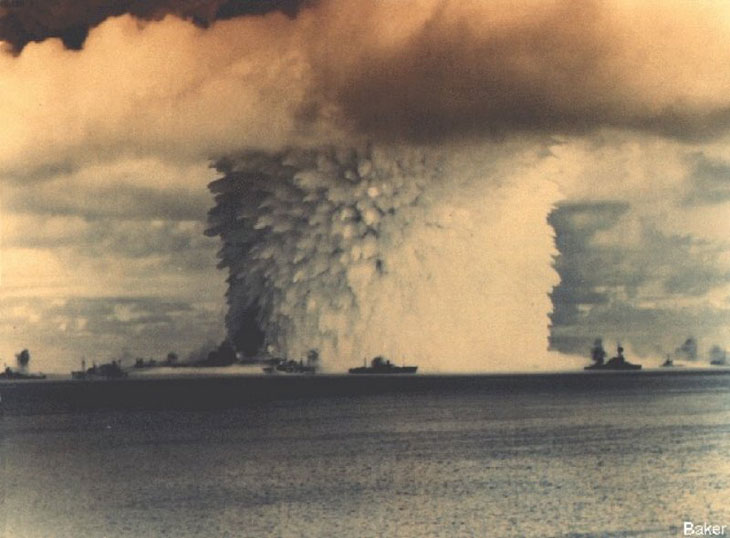
It’s a compelling thought experiment. What if there were an industrial civilization on Earth before us? What if, over the course of tens of millions of years, all of the direct evidence for it were ground to dust? Would it be possible to detect evidence of this civilization-infused dust in the geologic record? Astrophysicist Adam Frank of the University of Rochester, and Gavin Schmidt, director of the NASA Goddard Institute for Space Studies, tackle this question in a paper published April 10, 2018, in the peer-reviewed International Journal of Astrobiology (view online here).
They call their study the Silurian Hypothesis after a race of intelligent, bipedal reptiles — known as the Silurians — introduced in a 1970 episode of the British science fiction series Doctor Who. Why? It’s because, as Frank explained in an April 2018 article in The Atlantic:
… if we’re going back this far, we’re not talking about human civilizations anymore. Homo sapiens didn’t make their appearance on the planet until just 300,000 years or so ago.
The idea for Frank and Schmidt’s new paper sprang in part from Frank’s studies of global warming from what he called an astrobiological perspective. In other words, he’d been asking whether any industrial civilization that rises on any planet will, through its own activity, trigger its own version of a climate shift. He explained:
We’re used to imagining extinct civilizations in terms of the sunken statues and subterranean ruins. These kinds of artifacts of previous societies are fine if you’re only interested in timescales of a few thousands of years. But once you roll the clock back to tens of millions or hundreds of millions of years, things get more complicated …
Could researchers find clear evidence that an ancient species built a relatively short-lived industrial civilization long before our own? Perhaps, for example, some early mammal rose briefly to civilization building during the Paleocene epoch about 60 million years ago. There are fossils, of course. But the fraction of life that gets fossilized is always minuscule and varies a lot depending on time and habitat. It would be easy, therefore, to miss an industrial civilization that only lasted 100,000 years – which would be 500 times longer than our industrial civilization has made it so far.
As in the well-known Kardashev scale – often invoked in discussions of possible alien civilizations – Frank and Schmidt define a prior earthly civilization by its energy use. A statement from the University of Rochester said:
Human beings are just entering a new geological era that many researchers refer to as the Anthropocene, the period in which human activity strongly influences the climate and environment. In the Anthropocene, fossil fuels have become central to the geological footprint humans will leave behind on Earth. By looking at the Anthropocene’s imprint, Schmidt and Frank … lay out evidence of what might be left behind if industrial civilizations like ours existed millions of years in the past.
Human beings began burning fossil fuels more than 300 years ago, marking the beginnings of industrialization. The researchers note that the emission of fossil fuels into the atmosphere has already changed the carbon cycle in a way that is recorded in carbon isotope records. Other ways human beings might leave behind a geological footprint include:
– Agriculture, through greatly increased erosion and sedimentation rates.
– Plastics, synthetic pollutants, and even things such as steroids, which will be geochemically detectable for millions, and perhaps even billions, of years.
– Nuclear war, if it happened, which would leave behind unusual radioactive isotopes.

Frank wrote in The Atlantic:
Ironically, however, the most promising marker of humanity’s presence as an advanced civilization is a by-product of one activity that may threaten it most.
When we burn fossil fuels, we’re releasing carbon back into the atmosphere that was once part of living tissues. This ancient carbon is depleted in one of that element’s three naturally occurring varieties, or isotopes. The more fossil fuels we burn, the more the balance of these carbon isotopes shifts. Atmospheric scientists call this shift the Suess effect, and the change in isotopic ratios of carbon due to fossil-fuel use is easy to see over the last century. Increases in temperature also leave isotopic signals. These shifts should be apparent to any future scientist who chemically analyzes exposed layers of rock from our era.
Frank said that looking at the rise and fall of civilizations in terms of their planetary impacts might also affect how researchers approach future explorations of other planets:
We know early Mars and, perhaps, early Venus were more habitable than they are now, and conceivably we will one day drill through the geological sediments there, too. This helps us think about what we should be looking for.
And he said:
By asking about civilizations lost in deep time, we’re also asking about the possibility for universal rules guiding the evolution of all biospheres in all their creative potential, including the emergence of civilizations. Even without pickup-driving Paleocenians, we’re only now learning to see how rich that potential might be.
Read more from Adam Frank in The Atlantic: Was There a Civilization On Earth Before Humans?

Bottom line: In a new paper published in April 2018 in the International Journal of Astrobiology, Adam Frank at the University of Rochester and Gavin Schmidt at the NASA Goddard Institute for Space Studies ask what signs an ancient pre-human industrial civilization would have left in the geologic record.











